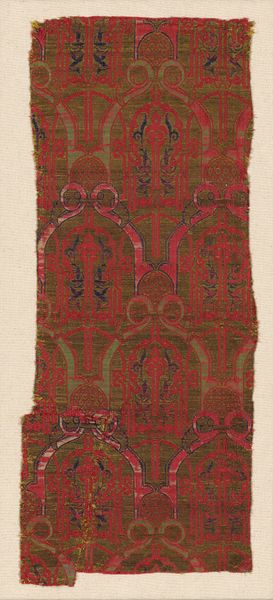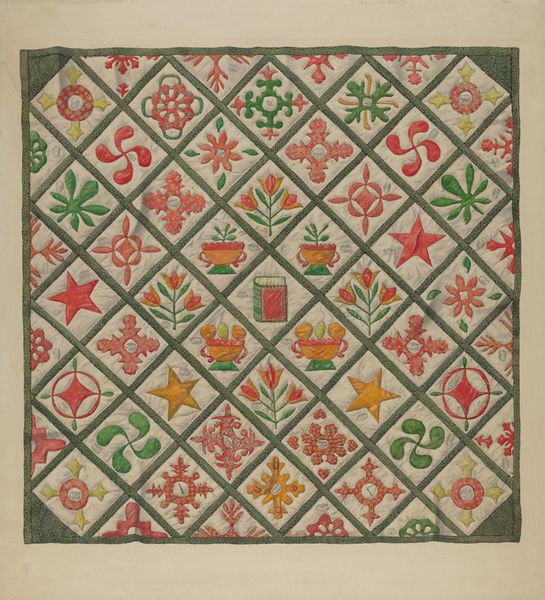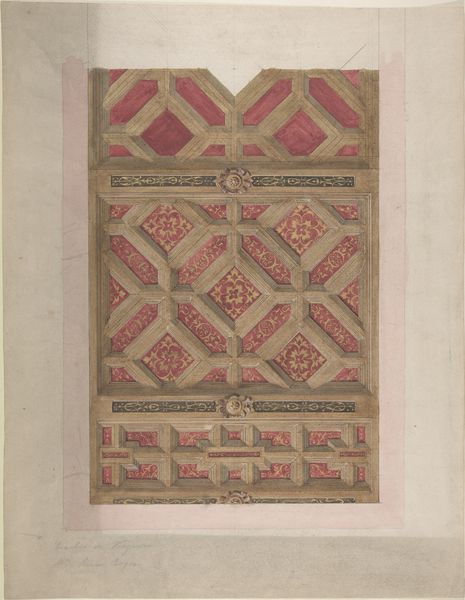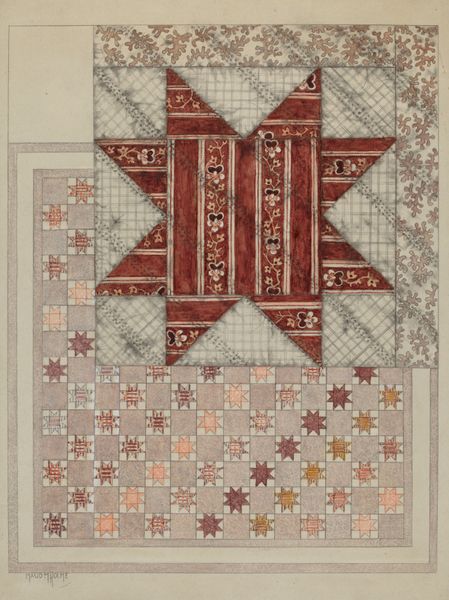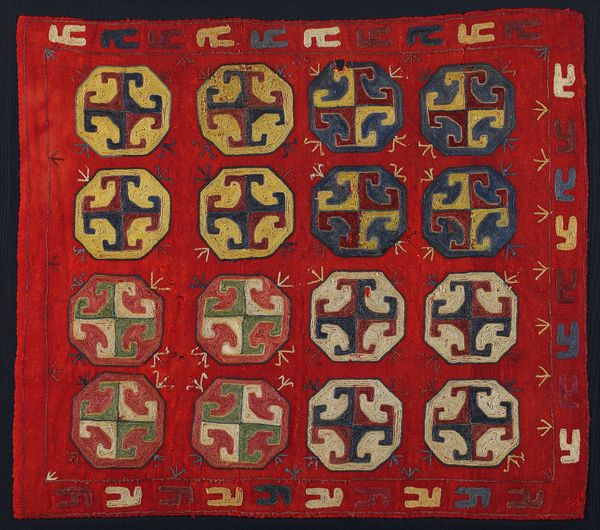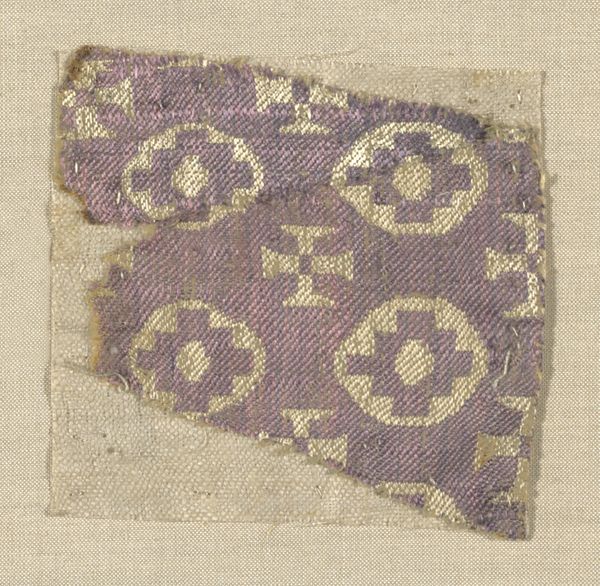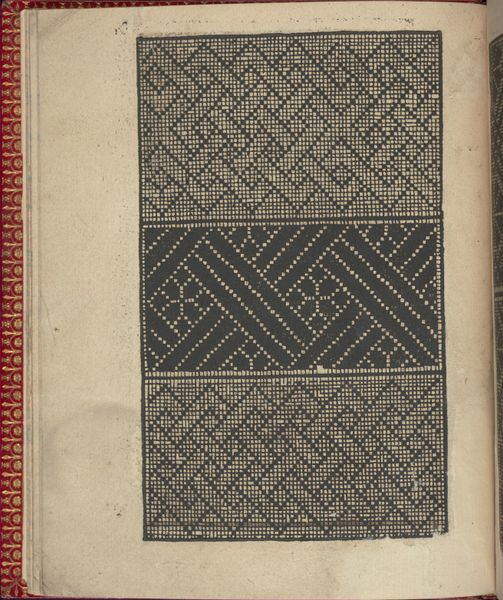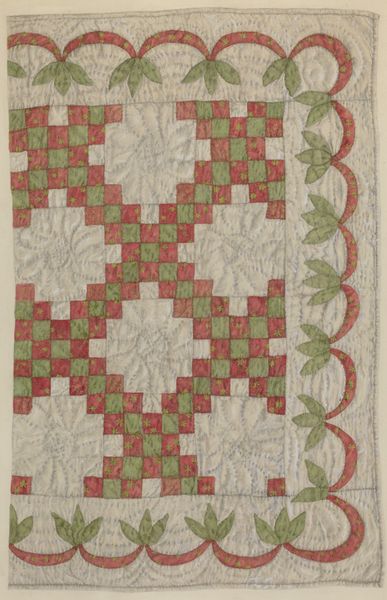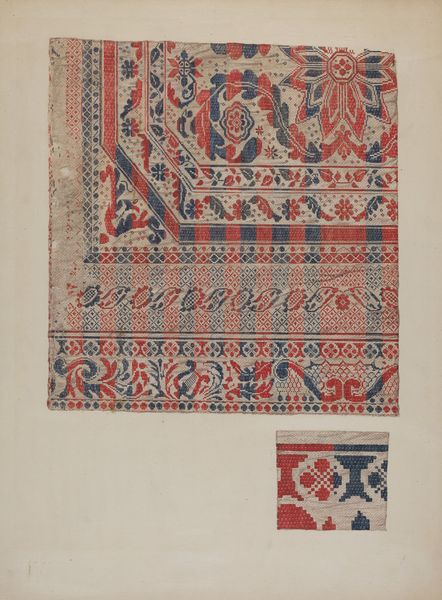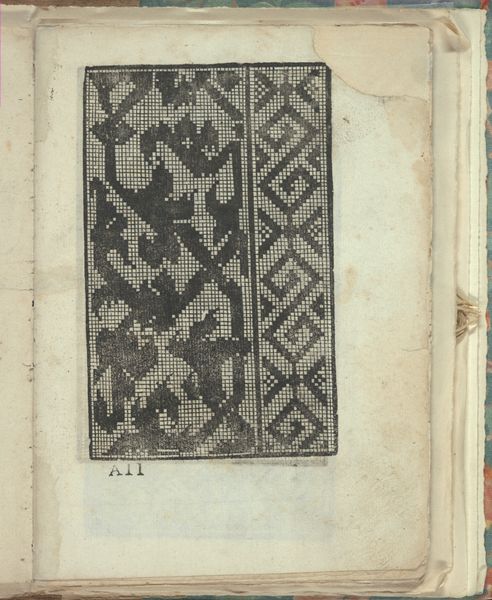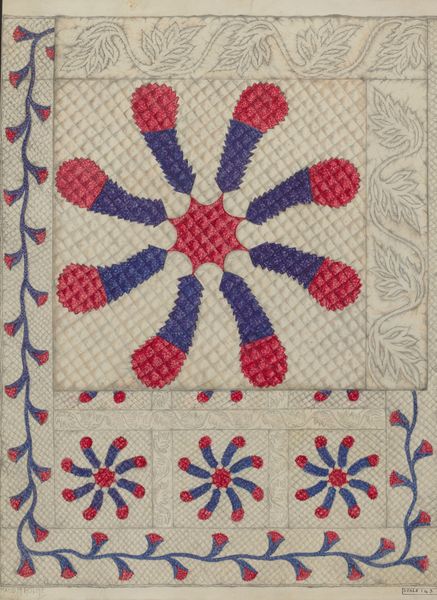
fibre-art, weaving, textile
#
natural stone pattern
#
fibre-art
#
textile
#
weaving
#
textile
#
fashion and textile design
#
fabric design
#
geometric-abstraction
#
repetition of pattern
#
regular pattern
#
pattern repetition
#
textile design
#
imprinted textile
#
layered pattern
#
indigenous-americas
Dimensions: a: 43.5 × 25.7 cm (17 1/8 × 10 1/8 in.) b: 40.3 × 25.4 cm (15 7/8 × 10 in.)
Copyright: Public Domain
These mantle corners were woven in Chancay, Peru, using cotton and camelid fibers. What's fascinating here is how the material influences the appearance. The cotton gives structure, while the camelid fibers - probably alpaca or llama - provide color and texture. Notice the stepped design, and stylized figures, perhaps animals or deities, woven into diagonal bands. Creating this textile would have involved multiple steps: spinning the fibers into yarn, dyeing them with natural pigments, and then painstakingly weaving the pattern on a loom. Textiles like these were not just decorative; they were deeply embedded in social life. The amount of labor involved suggests these corners were high-status objects, perhaps used in ceremonial contexts or to adorn the tombs of important individuals. Considering materials, making, and context helps us understand the significance of these fragments, and challenges any assumptions about a divide between art and craft.
Comments
No comments
Be the first to comment and join the conversation on the ultimate creative platform.
